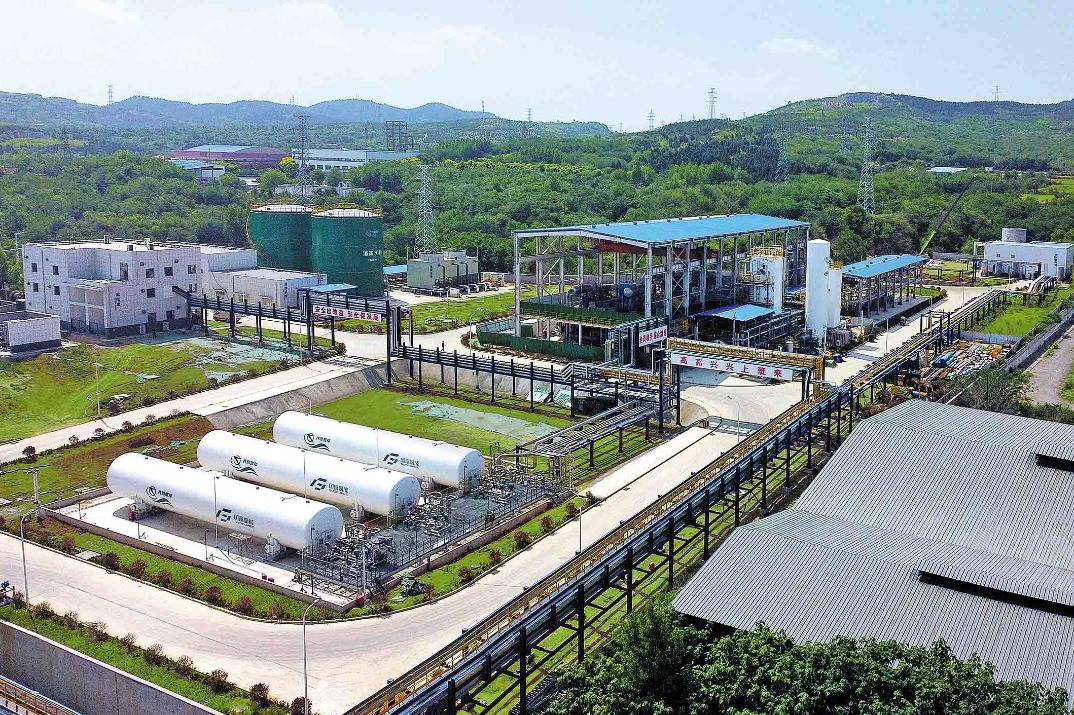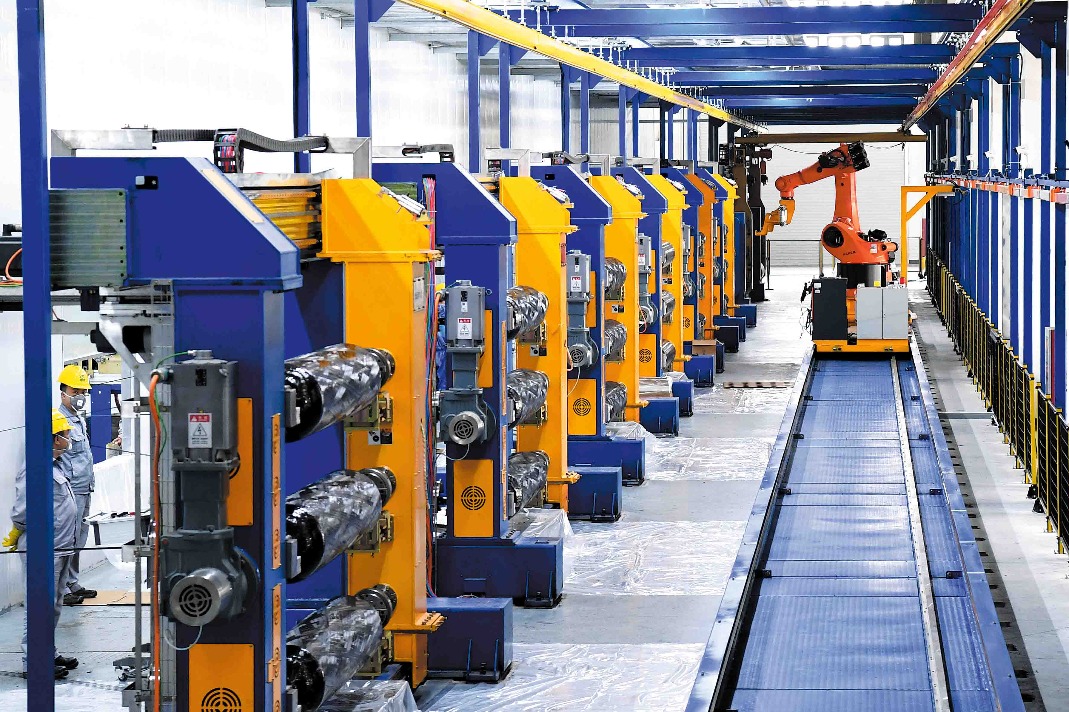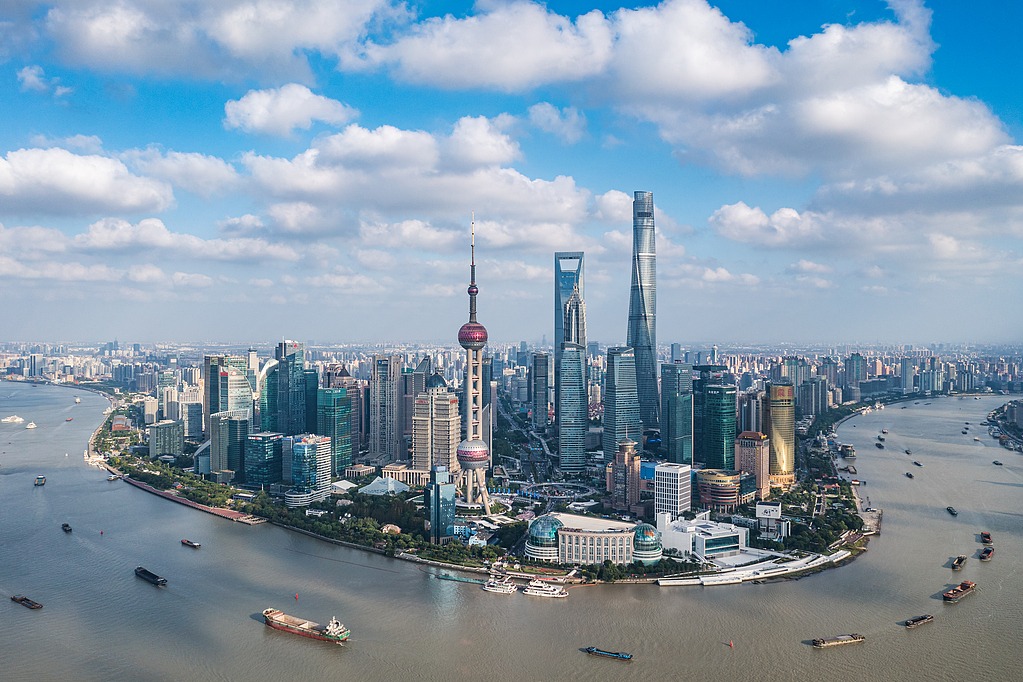Year of lower tariffs, easier market access


RCEP takes effect on Jan 1 and will likely transform global economy against all odds
Jan 1 might bring glad tidings to people for a variety of reasons, but for business executives such as Wang Zhengbo, president of Guangxi TWT Supply Chain Management Co Ltd, the coming New Year's Day will unveil a happy breakthrough. On that day, the Regional Comprehensive Economic Partnership agreement will take effect in 10 signatory members out of the total 15, potentially transforming the global economy and fortunes of companies like TWT Supply Chain.
The company, based in Nanning, Guangxi Zhuang autonomous region, trades in agricultural products. It focuses on markets in the footprint of the Association of Southeast Asian Nations.
For TWT Supply Chain, closer ties between China and ASEAN under the RCEP framework would mean further reduction in trade costs and expansion of trade items. What's more, overall business prospects will likely get increasingly brighter.
The free trade agreement or FTA, signed by 15 Asia-Pacific economies including China, South Korea and Japan, and all 10 member states of ASEAN in November last year, has created the world's largest free trade bloc.
The 10 countries where the FTA will take effect on Jan 1 are Brunei, Cambodia, Laos, Singapore, Thailand, Vietnam, China, Japan, New Zealand and Australia.
The RCEP region has a population of around 2.27 billion, or about one-third of global population. Combined GDP of the 15 members was $26 trillion in 2019, and exports totaled $5.2 trillion, or 30 percent of global exports, according to China's Ministry of Commerce.
The RCEP agreement once in force is expected to further integrate the massive regional market, thanks to trade and investment facilitation and liberalization measures, analysts and business executives said.
That will not only lead to increased trade and investment activities in the region but usher in a new wave of growth impetus, which could aid the world economic recovery from the impact of the COVID-19 pandemic, and ward off ill-effects of rising protectionism and the anti-globalization sentiment, they said.
"The RCEP will spread the rule of trade law more deeply in the Asia-Pacific," said Stephen Jacobi, executive director of the New Zealand International Business Forum, in an email to China Daily.
"Enterprises and workers will benefit from better market access and better trade rules. Some economies will be linked by free trade arrangements they have not had before. Other provisions will ensure trade can be done more easily and less expensively," said Jacobi.

He is also serving as executive director of the Asia-Pacific Economic Cooperation Business Advisory Council for the period from December 2020 to this year-end, to coincide with New Zealand's chairmanship of Asia-Pacific Economic Cooperation or APEC.
"That will help ensure goods and services can flow more freely across supply chains in the region. In this way, increased trade can contribute to increased economic growth and assist the pandemic recovery," he said.
Da Hongfei, CEO of Onchain, a Shanghai-based blockchain technology startup, said the firm expects to increase its business presence by expanding to more RCEP members starting from Singapore, where the company has already located its first branch for the ASEAN region.
"As soon as our new business model in Singapore matures, we will extend it to more countries," Da said, adding the implementation of the RCEP agreement will bring enterprises more opportunities and resources.
"Thanks to reduced tariff levels, easier market access and improved regulatory environment, enterprises will have not only broader market access and cheaper raw materials but, more importantly, wider options for talent and technology," he said.
According to Wei Jianguo, vice-chairman of the Beijing-based China Center for International Economic Exchanges, the free trade bloc formed by the RCEP agreement will become the most diversified economic bloc in the world with its signatory members currently at different stages of development, following different political systems and having diverse social structures.
"The RCEP agreement, reached at a difficult time with challenges from COVID-19 and the anti-globalization sentiment, is expected to drive a new round of economic globalization by promoting free trade," Wei said.
"The implementation of the agreement will also accelerate the movement of global industrial technologies, capital and talents to Japan, South Korea, ASEAN, and most importantly, to China," he said.
According to the agreement, more than 90 percent of the trade in goods will be eventually tariff-free over 20 years once it comes into effect.

China has promised to completely open up 86 to 90 percent of goods. It has also promised zero-tariff treatment would make up about 90 percent of all tariffed items for the 10 ASEAN member states, as well as Australia and New Zealand.
Apart from Laos, Cambodia and Myanmar, other countries mentioned above have promised similar or easier access to zero-tariff treatment for China.
Besides, while FTAs among countries in the region mainly cover trade in goods, the RCEP agreement extends into trade in services, investment and the alignment of members' domestic rules with the agreement.
According to Wei, the cumulative rules of origin is a striking achievement of the RCEP, which uses accumulated regional value to determine the origin of a product in the region, and therefore makes it easier for products to enjoy zero tariffs.
"The RCEP is expected to further expand the regional industrial and supply chains, and help the members build mutually beneficial industrial and supply chain partnerships, as well as stabilize the chains," Wei said.
The RCEP members are expected to set high-level Customs rules, inspection and quarantine norms, as well as technical standards. Through these rules, the RCEP agreement can significantly lower the cost of trade in the region, enhance the competitiveness of products, create more business opportunities for enterprises, and provide more choices and benefits to consumers, he said.
Jacobi, executive director of the NZIBF, said although New Zealand already has high-quality FTAs with all the RCEP economies, including China, and the immediate trade gains are therefore unlikely to be big, the country will still benefit from market access improvements in some economies and the improvement in trade rules.
One thing of particular interest is that frozen goods from New Zealand will be cleared more quickly through Customs, which will help the exports of perishable food products, he said.
Sun Shunli, Party secretary and chairman of Beijing-based China Construction Second Bureau Installation Engineering Co Ltd, is also confident of the company's business prospects in the RCEP region.
The company entered the Southeast Asian market as early as 2008.Thanks to the fast-growing market demand, its accumulative contract value totaled 2.2 billion yuan ($345.6 million), with eight projects now under construction.
"There is great cooperation potential between China and Southeast Asian countries in the construction sector, considering the vigorous local market demand, and Chinese enterprises' advantages in technology and resources," Sun said.
Da of Onchain said he believes globalization will be furthered by the RCEP agreement, and applications of technologies like the internet of things, 5G, artificial intelligence and blockchain will also be accelerated to inject more growth impetus into regional and global economy.
Progress in blockchain technology applications, specifically, will significantly reduce trade and commerce costs related to information transmission and verification, as well as facilitate economic growth with such blockchain-powered digitalization of assets, he said.
According to a recent report by the Hainan province-based China Institute for Reform and Development, the RCEP agreement is expected to create additional growth for exports, foreign investment stock and GDP in member countries by 10.4 percent, 2.6 percent, and 1.8 percent, respectively, by 2025, compared with the baseline.
The report also said the RCEP agreement will boost the global GDP growth by an average annual increase of $186 billion.
Jacobi said the RCEP agreement also shows to the world that trade liberalization is possible even amid challenging times.
"Protectionism should never be the response to the pandemic or any other crisis. Economies need to work together, as they did most recently at APEC, to trade our way out of crisis and into recovery," he said.





































